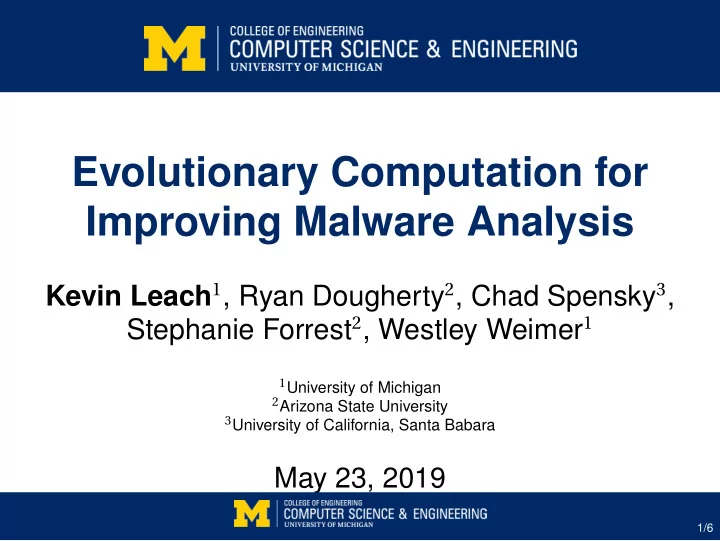

Evolutionary Computation for Improving Malware Analysis Kevin Leach 1 , Ryan Dougherty 2 , Chad Spensky 3 , Stephanie Forrest 2 , Westley Weimer 1 1 University of Michigan 2 Arizona State University 3 University of California, Santa Babara May 23, 2019 1/6
Introduction 2/6
Malware Analysis � Analysts want to quickly identify malware behavior � What damage does it do? � How does it infect a system? � How do we defend against it? 3/6
Stealthy Malware � Growing volume of stealthy malware � Malware sample maintains secrecy by using artifacts to detect analysis environments � Timing artifacts — overhead introduced by analysis � Single-stepping instructions with debugger is slow � Imperfect VM environment does not match native speed � Functional artifacts — features introduced by analysis � isDebuggerPresent() — legitimate feature abused by adversaries � Incomplete emulation of some instructions by VM � Device names (hard drive named “VMWare disk”) � Too much effort to analyze 4/6
Transparency � We want to understand stealthy samples � We want a transparent analysis � We can mitigate artifacts � Hook API calls (e.g., isDebuggerPresent() ) � Spoof timing (e.g., virtualize result of rdtsc instruction) � Use alternate virtualization (e.g., a sample that detects VMWare may not detect VirtualBox) 5/6
Cost of Transparency � Mitigation takes resources � Development effort (e.g., modifying virtualization) � Execution time (e.g., due to runtime overhead) � Mitigation covers some subset of malware � Artifact category (i.e,. hooking disk-related APIs covers malware that checks the disk) 6/6
Recommend
More recommend